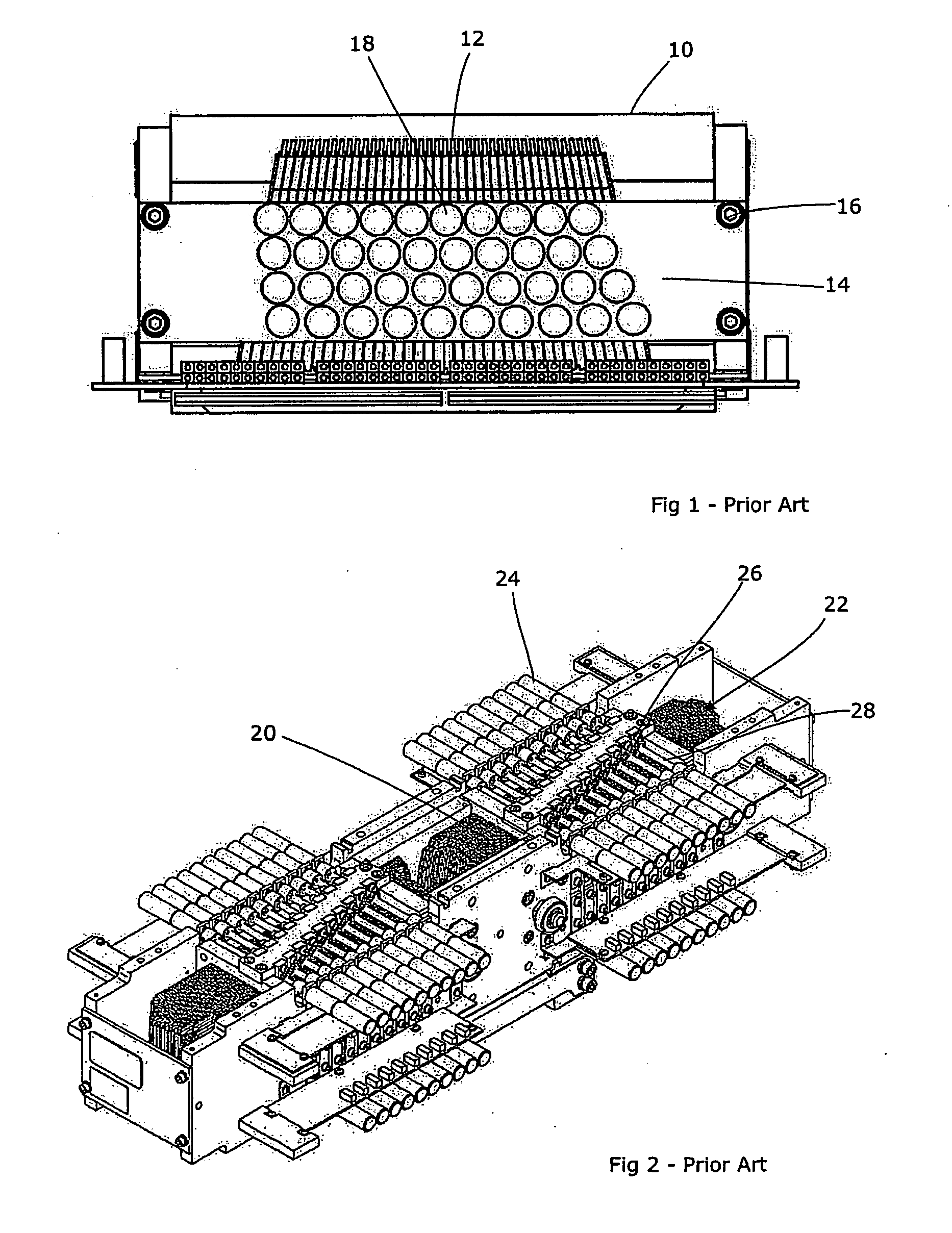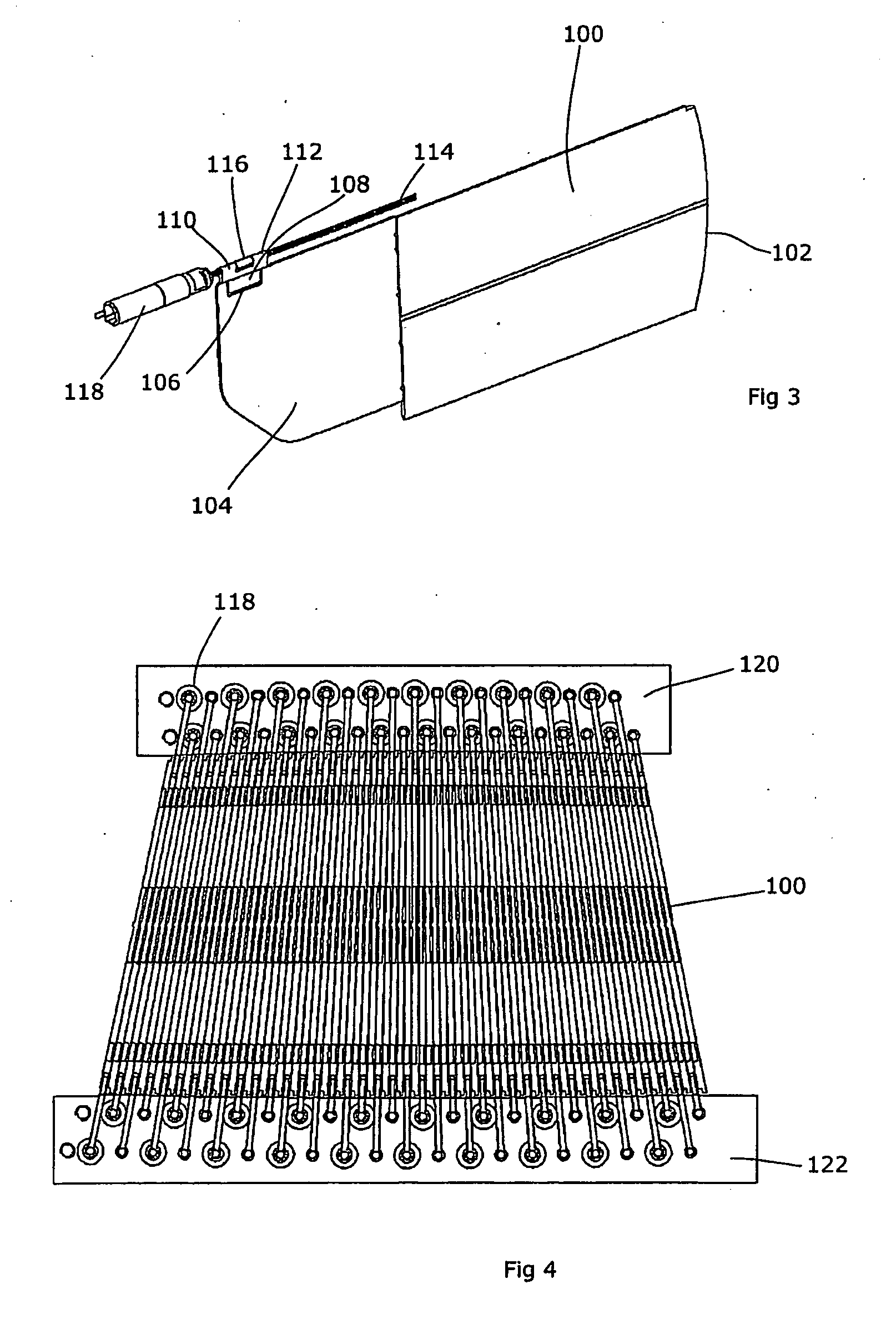Multi-leaf collimators
a collimator and multi-leaf technology, applied in the field of multi-leaf collimators, can solve the problems of high frictional load of the leadscrew, short oscillation of the long free end of the leadscrew, so as to reduce production costs and assembly times, drive a greater amount of leaves, and reduce the effect of production cost and assembly tim
- Summary
- Abstract
- Description
- Claims
- Application Information
AI Technical Summary
Benefits of technology
Problems solved by technology
Method used
Image
Examples
Embodiment Construction
[0037]The inherent limitation on the minimum length of the rack and pinion-type system is the quantity of the motors mounted on the side of the module. For example, assuming that each module is designed to drive 40 leaves, that each motor is 10 mm in diameter and (therefore) spaced 14 mm apart in a double row, then the length of the module will have to be 14×(40 / 2), i.e. 280 mm, plus the distance over which the leaves are expected to travel. If we take a rough figure of 70 mm for this distance, this makes an overall length for the system of 350 mm. The minimum overall height will be the motor diameter plus the height of the rack, i.e. about 32 mm. A rack and pinion module when mounted on the leafbank will therefore increase the treatment head diameter significantly.
[0038]The MLC actuator described herein features a lead screw that runs parallel to the leaf, which means that the length of the drive modules are shorter overall, as the leadscrew only needs to be a slightly longer than ...
PUM
 Login to View More
Login to View More Abstract
Description
Claims
Application Information
 Login to View More
Login to View More - R&D
- Intellectual Property
- Life Sciences
- Materials
- Tech Scout
- Unparalleled Data Quality
- Higher Quality Content
- 60% Fewer Hallucinations
Browse by: Latest US Patents, China's latest patents, Technical Efficacy Thesaurus, Application Domain, Technology Topic, Popular Technical Reports.
© 2025 PatSnap. All rights reserved.Legal|Privacy policy|Modern Slavery Act Transparency Statement|Sitemap|About US| Contact US: help@patsnap.com



